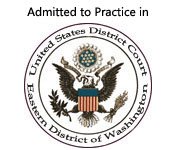Ask an Attorney a Question for FREE!
The Claim Investigation Process
It's not what happened but what you can prove happened!
The claim investigation process takes time and effort.
Remember this is YOUR claim and everything about it will affect YOUR life.
Do not rely on the claim adjuster. To her, your accident is one more file to work on.
My best advice to you is: become your adjusters ally! Show respect, yet be forceful. You will never get what you want by yelling, screaming, or being out of control.
My colleges used to laugh at people that would get out of control (being rude) because they could put that file at the bottom of the pile.
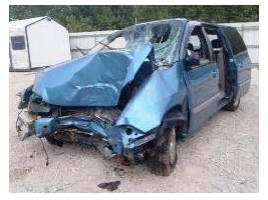
What is that mean? It means that your claim will be delayed an extra period. If you are depending on getting your car fixed, then this can put you in a bad spot.
The best thing to do is not to rely on the adjuster and do the job for her!
Adjusters get paid to investigate accidents. If you rely on their investigation, then you could be setting yourself up for big surprises.
Remember, you are the number one witness! You were right there. Your adjuster was not!
Also, you are the number one beneficiary of the result of the investigation; the adjuster must meet a quota and make her boss happy.
How can you help the adjuster with the claim investigation process?
As noted above, you can help your claim investigation by showing or proving your version of events.
You can be perfectly innocent, but if the other party does a better job on “verifying” their version of events, you lose.
The first thing you will be asked for is a recorded statement. Do not give this statement, Click here for more on recorded statements, or if you do, then read our section on recorded statements.
Do not act as if you have anything to hide, instead, provide them with a “verbal” statement (same as a recorded statement but without being taped).
Your adjuster will not like this. You are making her job harder. But that is okay, you can turn the tables around.
To better help the claim investigation process along, you need to be documenting everything.
After the statement, send a letter to your adjuster thanking her for taking your verbal statement and then outline the process that follows as you understand it. Something like this will do the job:
Ms. Adjuster, thank your for handling my claim. I enjoyed talking to you this morning. Per your request, I have provided you with a verbal statement. It is my understanding that the next step to move the claim investigation process forward, and this claim to closing, is to provide you with the police report, a diagram, and witness information.
I also understand that this process will take about two weeks from today's date. Please contact me if there is anything else that you will need to bring this matter to resolution or if this information is incorrect.
Thank you.
This will give the impression that you are documenting your claim (you are building a paper trail). Your adjuster will not be able to tell you that you breached your duty to cooperate. A letter like the one above is strong evidence of your willingness to cooperate.
In the example above, you can see the steps that you are going to follow.
First, you need to get the police report.
Getting the police report by yourself is very important. You will be able to see exactly what it says!
Many adjusters will tell you that the police report says something it does not! If you have it in front of you, then your adjuster cannot lie to you.
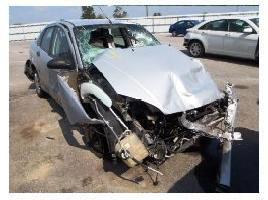
Second, many states require you to sign something before releasing the information to anyone not directly involved in the accident (i.e. insurance adjusters).
Therefore, to obtain a police report, your insurance company will have to send you a form for you to sign, then you have to mail it back to them.
They will mail that form to the police department along with the police report fee.
Two weeks later the police report will be released to the insurance company.
This is the procedure in most states. Other states are a little more efficient than this, but as you can probably tell, it will be a “mailing game.”
Therefore, it is better to take it upon yourself to go to the police department and get the police report.
This way, you can have it immediately.
You have to wait anywhere between two to three days before the report is final, but that is all you have to wait.
The cost of obtaining a report is anywhere from $5 to $15 (depending on your state). Keep the receipt and fax it to your adjuster.
They will have to send you a check to reimburse you for the cost.
Make sure you can read and interpret the police report. They are difficult to understand as they have codes on them. To read more on how to read a police report, click here.
The next very important piece of information to move forward your claim investigation forward will be a diagram of the accident.
If you did not draw a diagram at the scene of the accident, then you need to sit down and draw one out.
A good diagram can help you win your argument.
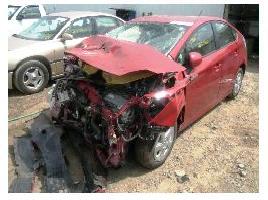
To read more on how to draw a good accident diagram, click here. A diagram will show your version of events better than any statement can. A picture is worth a thousand words.
The next step for the claim investigation process will be photographs!
The diagram should show the vehicles in movement and the photos will show the exact location of the accident.
A good photo can clear any question regarding visibility and/or reaction time. You can use a camera phone and email them to your adjuster.
This will not cost you a dime. If you do have to print them, then save the receipt and have them pay you back!
To help your claim investigation and for better understanding, you should always visit the scene of the accident again so you know what really went on.
If you have the opportunity to take pictures, then you need to show all views of the intersection or parking lot. It is critical that you show every perspective so you can document your claim.
What is better than a diagram and photographs? A video of the accident! Video?
How can you get a video?
This used to be nearly impossible, but nowadays most parking lots have cameras.
If you go and ask (local businesses) you might be surprise what information they will resale.
If you let your adjuster do this, many companies will not release the tape. Why?
People take insurance companies seriously, too seriously sometimes, and they do not want to end up in court.
This would not happen anyway, but people’s perceptions are stronger than what a claim adjuster can argue.
By going and asking politely, you can get the best possible piece of evidence to prove that you had nothing to do with the accident.
Some places will charge money for the recording (Target $50). You can fax the receipt and have them pay you back.
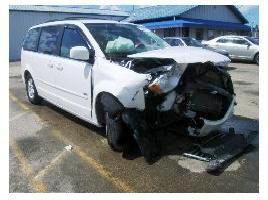
Why do you want to do all this?
If you do this, then you will be able to have complete control over the claim. You know exactly what your adjuster is looking at. But more importantly, you are moving the process forward.
You can get all of these done in three days (one for diagram, statement, and photographs, the other two: waiting for the police report!).
After this, your claim investigation should move forward.
You know have provided enough information so the adjuster can make a coverage determination.
Also, the liability (fault) investigation will be almost ready to be finalized.
They will only need the other driver’s statement. If they do not provide a statement, then liability (fault) will be determined based solely on the information that you provided.
With the steps above, there will not be evidence against you regarding your duty to cooperate.
In fact, you are cooperating more than most people would. Your goal is to move the claim investigation forward on your own terms, not the insurance company.
I know that if you follow these steps, you would be doing much more than you really should.
After all, we pay insurance to have the carrier protect us and investigate accidents. Unfortunately, your accident will be another one in the life of the adjuster.
So take a proactive approach before you get burned!
Bodily Injury eBook
Traffic ticket eBook
Total Loss eBook
1. Recorded Statement
2. Police Report
3. Overlay Sheet (Interpretation of Police Reports)
4. Accident Photos
5. Accident Diagrams
6. Accident Videos
7. Vehicle Damage Estimate
8. Length of Time of the Auto Insurance Claim
Find a Qualified Attorney in Your City
|
For a Free Review of Your Case
Please Call (866) 878-2432 |

